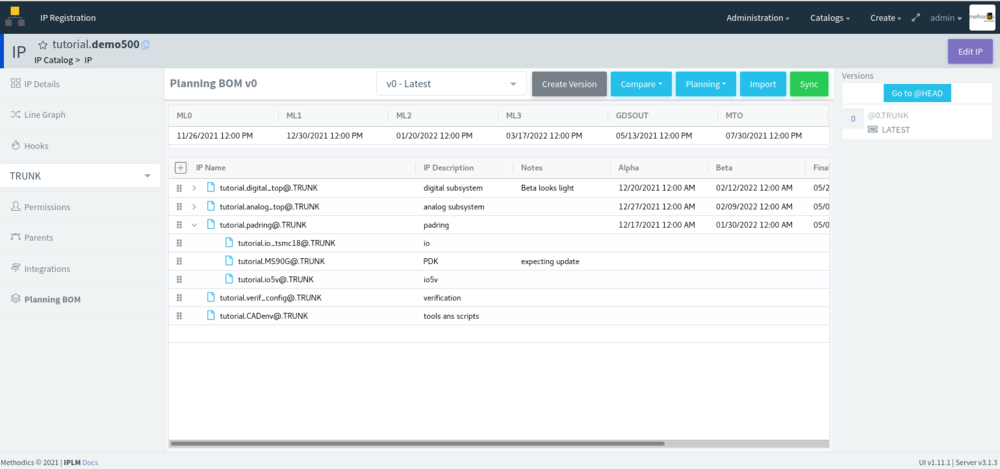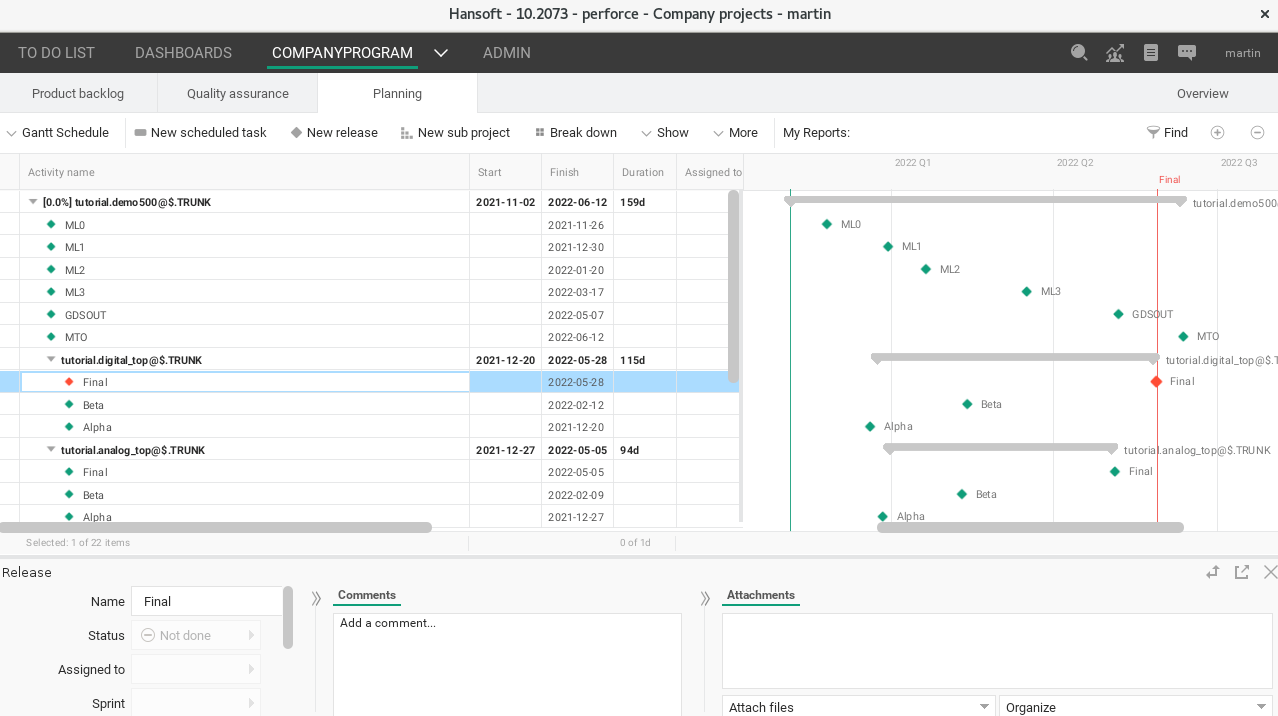A planning BoM should be the first step of any project — especially a project as large as semiconductor design, where the project costs (and the costs of failure) are extremely high. To efficiently and accurately account for the needs of a project, and to help determine the feasibility of project before getting too deep, a planning BoM can make all the difference.
Here, we explain what a planning BoM is, why it is important to semiconductor design, and how creation of a planning bill of materials is made easy with Perforce IPLM (formerly Helix IPLM).
➡️ Streamline Planning BoM Creation
Back to topWhat Is a Planning BoM?
A planning BoM, or planning Bill of Materials, is a list of the potential needs of a project that is initiated in the early stages of the project, sometimes even before it has formally been approved.
IPs in the early planning are often loosely defined and could have a high amount of project and requirements churn. The planning BoM facilitates early planning by looking at the project and IP schedules, determining make-versus-buy decisions, and allows IP BoMs to be shared quickly between the planners.
With a planning BoM, you can:
- Automate the workflow of new project and IP creation.
- Perform requirements-driven “What If” analysis of IP decisions.
- Understand the cost impact and scheduling impact of choices.
- Drive towards delivery of an execution BoM.
- Commit what you will deliver in a project.
Back to topYour Complete Guide to Planning BoMs
Want a step-by-step look at how to use planning BoMs effectively? Get expert insight by downloading our Planning in Perforce IPLM white paper.
Why Is a Planning BoM Important in Semiconductor Design?
Time-to-market pressures are always a critical consideration in the launch of a semiconductor project.
A planning BoM is first initiated in the feasibility stages of a project, where decisions are being made on whether the project can actually go ahead. An idea of the launch date may be known in order to hit the predicted revenue figures. However, the development schedule can be unpredictable.
If a company implements a planning BoM methodology, this helps principally with two things:
- It facilitates planning and negotiating schedules with IP owners/suppliers.
- It gives empirical information as to the accuracy of the planning.
Comparing planned versus actuals on previous projects can give better forecasting and planning on new projects.
Back to topGet Started With a Live Demo
It can be difficult to begin BoM creation and stay up to date on best practices. Get personalized, one-on-one guidance with a walkthrough from one of our experts.
How to Create a Planning BoM
There are different ways to initiate a planning BoM. The planner could simply create a list of all the planned IPs for a project, linking them to the actual planned releases in the IP catalog. They may not be linked (nor exist) yet, but the planner can still create a planned item for the IP. This can help engineers see what is coming and can promote IP reuse within the organization.
More often, however, new projects are built on what comes before. Therefore, it is possible to import the IP (as planned items linked to the actual releases in the IP catalog) to the new project’s planning BoM.
Here the planner can make changes to the planning BoM, link the IP to new IP lines (planned releases), change the structure of the project, etc. They can make versions of the planning BoM throughout the evolution of the project and compare between these versions. Schedules and requirements can be set on the planned IPs, and these can be rolled up to the top level of the project, as illustrated below in Perforce IPLM:

As well as in P4 Plan (formerly Helix Plan):

When necessary, the development of the project can start from the planning BoM. A “synchronization” of the planning BoM to the execution BoM can be run which will create new releases of IP (if the hierarchy has changed), but will also retain the versions of IP that were present at the time of import (if the hierarchy has not changed).
Furthermore, it is envisaged that IP governance workflows would be initiated from the planning BoM, such as IP need, registration, or provisioning.
Back to topWhy Use Perforce IPLM For Planning BoMs
Implementing a planning BoM methodology using Perforce IPLM helps in three important ways:
- It makes it possible for engineers to see what IPs are being planned, which maximizes IP reuse in a company.
- It facilitates planning and negotiating schedules with IP owners/suppliers.
- It gives empirical information as to the accuracy of the planning. Comparing planned versus actuals on previous projects can give better forecasting and planning on new projects.
Perforce IPLM is already managing the IP catalog and the development of that IP. The engineering metadata is live in the system. While planning BoMs are usually constructed using spreadsheets where the information isn’t live, Perforce IPLM facilitates precise and efficient planning activities by capturing the live data at the time of planning.
Want to see how planning BoMs can benefit your business? Connect with one of our experts today to get your questions answered, schedule a live demo, and gain access to our evaluation resources.
